Dive into a world of delicious traditions as we explore the flavors that make Vietnamese Lunar New Year Food truly special! From savory delights like Banh Chung to sweet treats like Xoi, join Viet Cruise Tours in discovering the heartwarming dishes that define this festive season. Get ready for a journey through simplicity and symbolism, where each bite tells a story of family, prosperity, and the joy of celebrating Tet. Let's savor the essence of Vietnamese Lunar New Year food together!
Banh Chung and Banh Tet, two culinary treasures that take center stage during the Vietnamese Lunar New Year, are more than just rice cakes – they are embodiments of tradition, symbolism, and the spirit of Tet itself.
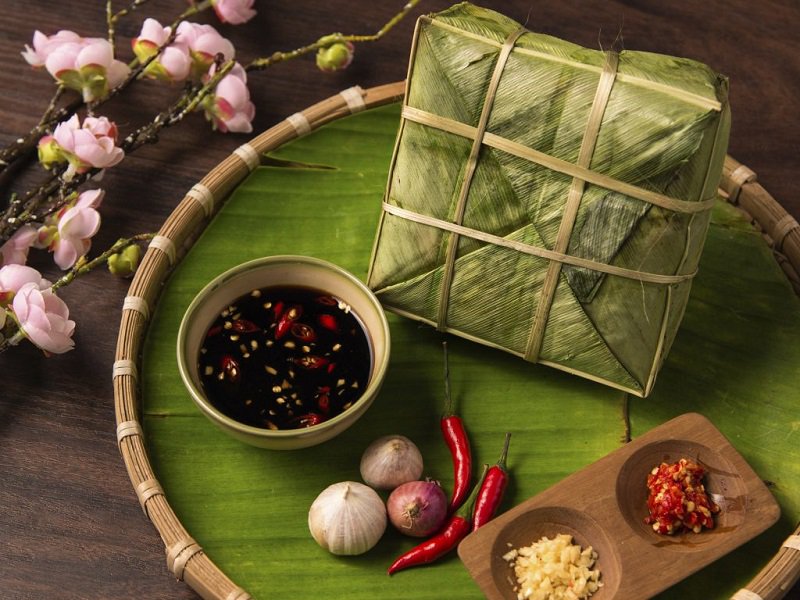
Banh Chung, a square-shaped glutinous rice cake, is a culinary masterpiece with roots tracing back thousands of years. The meticulous preparation process reflects the importance placed on familial ties and ancestral homage during Tet. Layers of glutinous rice, mung beans, and pork are meticulously arranged before being encased in banana leaves. Boiled to perfection for hours, Banh Chung emerges as a dense, flavorful creation symbolizing the Earth. Its square shape represents harmony and the timeless connection between generations.
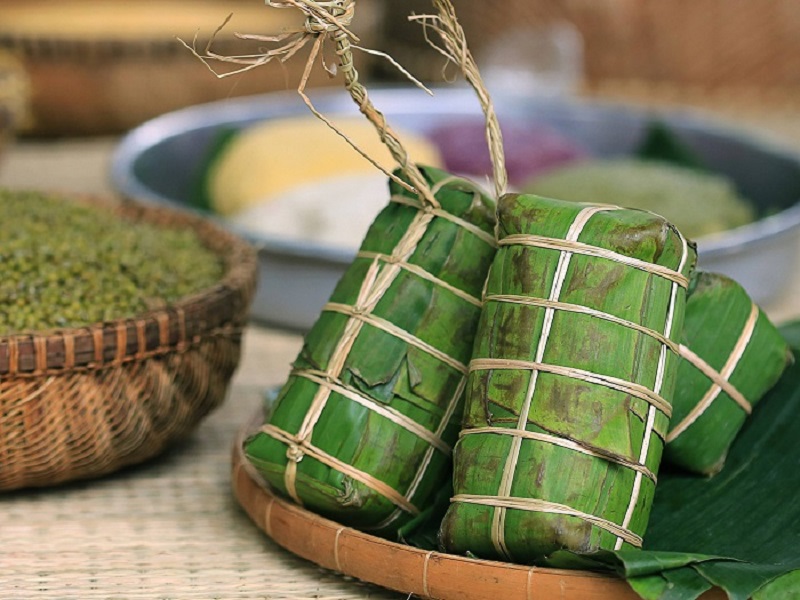
Similar in essence yet distinct in form, Banh Tet is the cylindrical counterpart to Banh Chung. With a filling typically composed of sticky rice, mung beans, and pork, Banh Tet showcases the ingenuity of Vietnamese culinary artistry. Encased in banana leaves and steamed or boiled, this cylindrical delight symbolizes the Earth's fertility and the circle of life. Banh Tet's rounded shape embodies unity and the continuous cycle of prosperity that families wish for in the coming year.
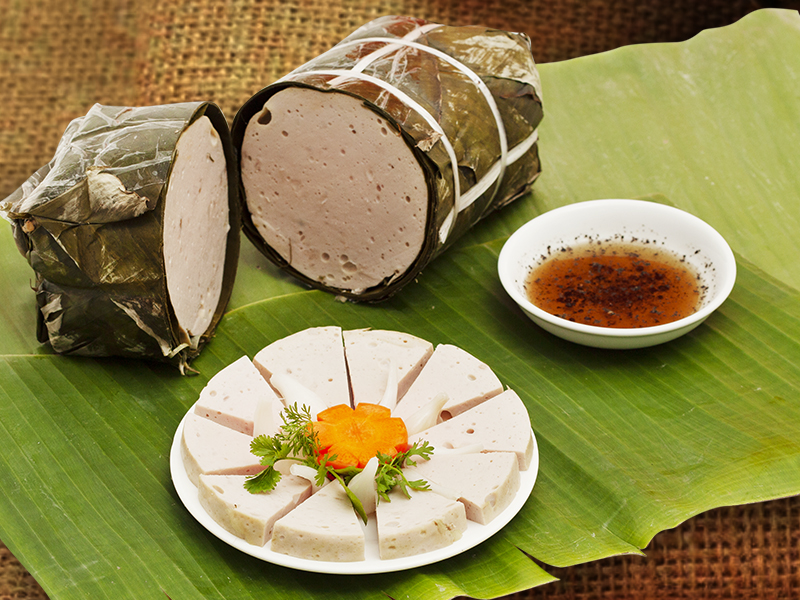
Gio Lua is a finely crafted pork sausage, known for its delicate texture and distinctive flavor profile. The process of making Gio Lua involves grinding high-quality pork, seasoned with a subtle blend of salt, pepper, and sometimes garlic. The mixture is carefully wrapped in banana leaves, giving it a cylindrical shape, before being steamed or boiled to perfection.
What makes Gio Lua an indispensable part of Vietnamese Lunar New Year Food is its versatility. Sliced thinly, it becomes an accompaniment to the iconic Banh Chung or Banh Tet, adding a savory element to the sticky rice cakes. Its mild yet flavorful taste also makes it a preferred filling for banh mi, Vietnamese baguette sandwiches, creating a delightful fusion of tradition and modernity.
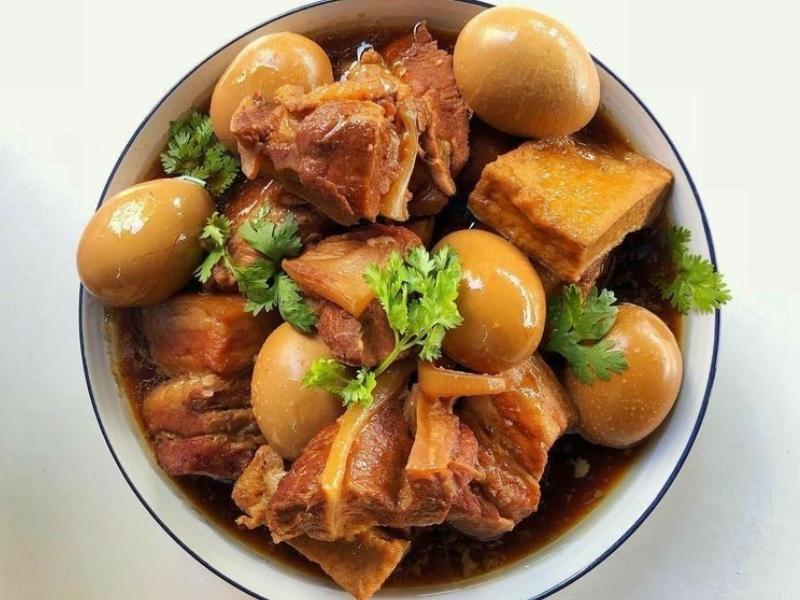
At the heart of Thit Kho is succulent pork, lovingly caramelized to perfection. The process begins by marinating pork belly or shoulder in a mixture of fish sauce, soy sauce, sugar, and a medley of spices. The marinated meat is then seared until golden brown, creating a heavenly aroma that fills the kitchen. Coconut water is added to the pot, and the dish simmers slowly until the pork achieves a melt-in-your-mouth tenderness.
Thit Kho is more than just a dish; it's a symbol of family unity and the preservation of cultural heritage. During Tet, families come together to prepare Thit Kho, sharing stories, laughter, and the joy of cooking. The dish holds a sentimental value, connecting generations through the shared experience of savoring this exquisite creation.
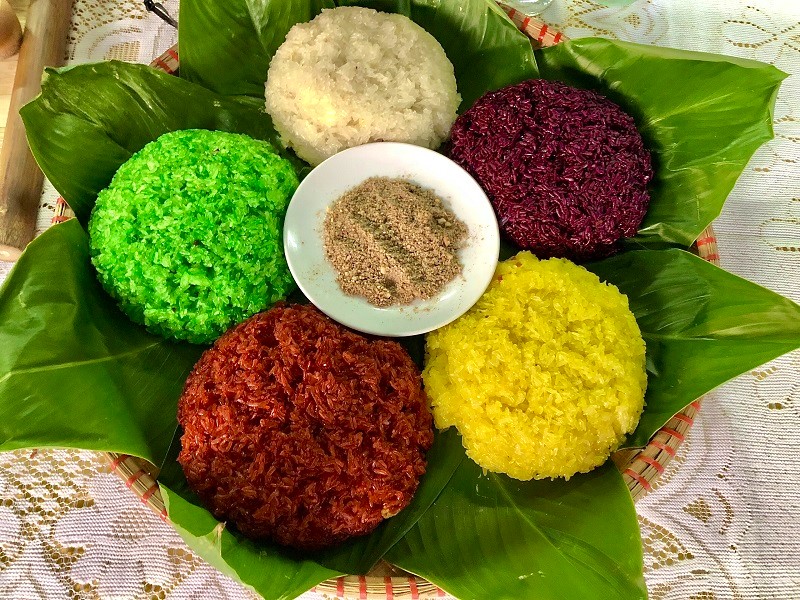
Xoi comes in various forms, each with its unique flavor and symbolism. Xoi Gac features the vibrant red hue of the Gac fruit, symbolizing good luck and happiness. Xoi Lac, adorned with peanuts, adds a delightful crunch, while Xoi dau xanh, with mung beans, offers a nutty richness. Regardless of the variety, Xoi is a sweet treat that transcends taste, embodying the spirit of celebration.
Xoi isn't just a dessert; it's a symbol of prosperity and the sweetness life has to offer. The sticky nature of glutinous rice represents the cohesion of family bonds, while the vibrant colors symbolize the joy and hope associated with the Lunar New Year. Serving Xoi during Tet is a way of wishing for a year filled with sweetness, good fortune, and shared moments of happiness.
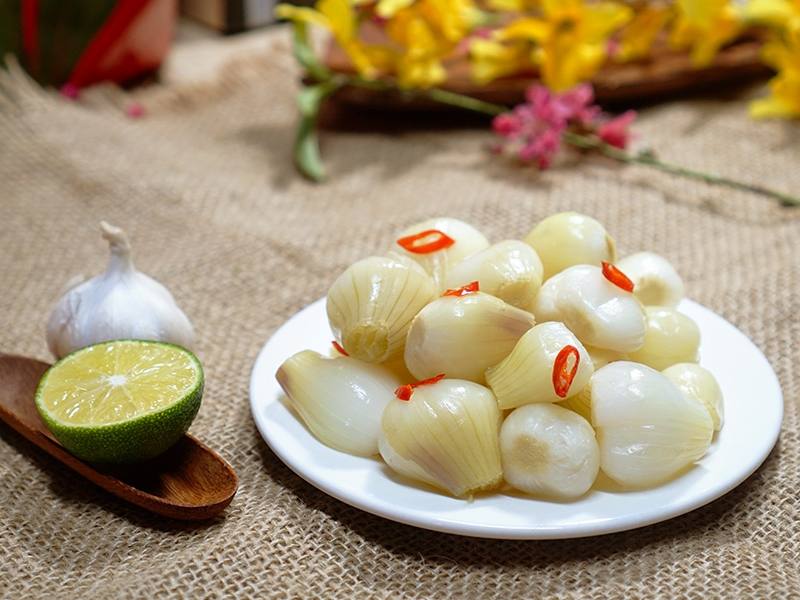
Dua Hanh is crafted through a simple yet meticulous process. Sliced onions, often red or shallots, are submerged in a brine of vinegar, sugar, and salt. The pickling process infuses the onions with a delightful tanginess, creating a condiment that perfectly complements the richness of other Tet dishes. The result is a colorful, crisp concoction that adds a refreshing contrast to the Vietnamese Lunar New Year Food.
Beyond its culinary charm, Dua Hanh carries symbolic significance. The sharpness of the pickled onions symbolizes the ability to cut through negativity and obstacles, making it a fitting addition to Lunar New Year celebrations where hopes for a fresh start and positive energy abound.
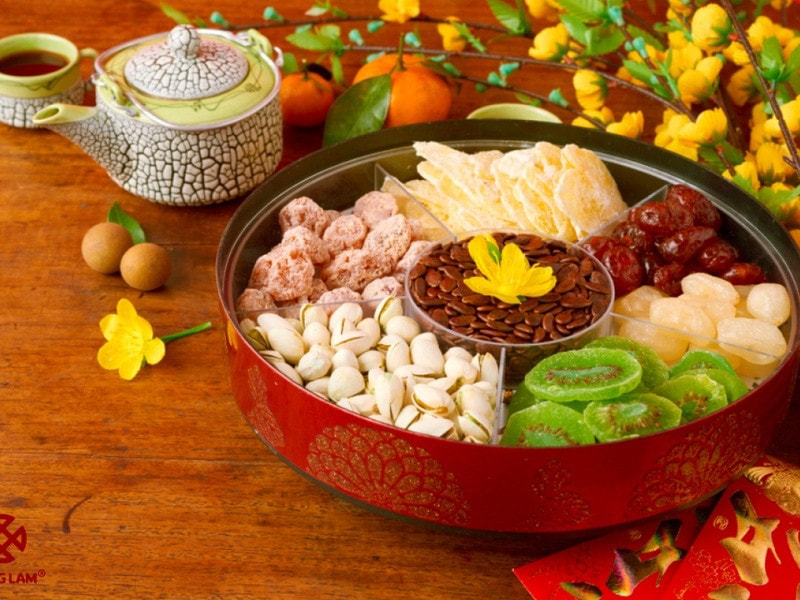
Crafting Mut is a delicate art that involves transforming fresh fruits into delectable, sugar-coated wonders. Varieties of fruits such as kumquats, coconut strips, papaya, and ginger undergo a meticulous process of being candied. The fruits are carefully preserved in a sugar syrup, allowing them to absorb the sweetness while maintaining their natural colors and textures. The result is a dazzling assortment of translucent, jewel-like confections that are as visually appealing as they are delicious.
During Tet, Mut isn't merely a dessert; it's a centerpiece that adds a touch of elegance to the celebratory atmosphere. The arrangement of these candied fruits in ornate trays or decorative boxes elevates the visual appeal of Tet tables, Vietnamese Lunar New Year Food, turning them into a feast for both the eyes and the palate.
CONTACT US:
*Address:
- 2 Paris Commune, Ben Nghe, District 1
- 241 Pham Ngu Lao St, Pham Ngu Lao Ward, District 1
*Website: https://vietcruisetours.com/
*Hotline/Whatsapp: +84 908.785.680
*Email: contact@vietcruisetours.com
Newer articles
Older articles